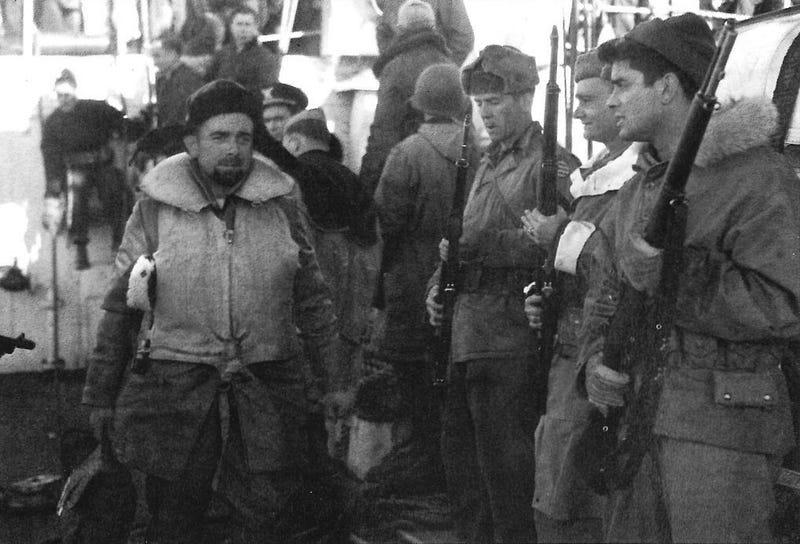The Hidden Struggle for Weather Control During WWII
Written on
Chapter 1: Introduction to the Weather War
World War II stands as the most extensive conflict in human history, encompassing a complex narrative filled with battles, espionage, and scientific progress. Amidst the tales of bravery and chaos, a more mundane yet crucial element played a significant role — the weather. Throughout the war, both the Axis and Allied forces fought fiercely for dominance over weather forecasting, as unpredictable weather could severely hinder military operations.
Given that the war unfolded just prior to the development of satellite technology, weather forecasting relied on traditional methods. Meteorologists had to measure atmospheric pressure manually and observe cloud patterns with the naked eye. This data was then relayed to military meteorologists who crafted essential forecasts for battle strategies.
However, both sides were intent on keeping their meteorological data secret from the enemy.
Section 1.1: The Vital Role of North Sea Forecasts
The most critical weather forecasts originated from the North Sea, whose climate significantly impacted the northern European coast. Accurate weather predictions were essential for British aircraft and ships traversing the crucial routes between the USA and Great Britain. Understanding the North Sea's behavior was paramount for military logistics.
What ensued was a prolonged and secretive struggle between Germany and the Allies, each competing to obtain the most accurate and timely weather information. Meteorological intelligence, while lacking in glamour, was deemed “indispensable” by the United States Weather Bureau, influencing every aspect of the war effort.
Section 1.2: Tactics in the Weather War

The weather war involved a network of isolated weather ships and remote observation posts. Germany aimed to establish weather outposts on the remote islands of the North Atlantic to gather real-time weather data for military strategists. However, these outposts were frequently targeted and destroyed by Allied forces.
German U-boats played a crucial role in this endeavor, quietly surfacing to set up meteorological stations. Although Germany attempted to deploy weather ships, these vessels were often targeted and sunk. Consequently, they resorted to disguising scout ships as fishing vessels or bribing local fishermen for weather information. The only way to ascertain whether a fishing boat was a spy was through inspection, as these covert operations utilized German Enigma machines to encode and transmit data back to command centers.
Chapter 2: The Busko Incident
In September 1941, the US Coast Guard's involvement in the weather war became evident. Prior to officially entering the conflict, they patrolled the Atlantic to gather weather data and eliminate foreign meteorological stations. During these patrols, they destroyed several German land stations and intercepted suspicious fishing boats.
The incident involving the Norwegian sealing ship Busko marked one of the first confrontations between the US and Germany during the war. The Coast Guard discovered that the Busko was carrying German personnel aiming to establish weather stations in Greenland. This discovery led to a raid by the USCGC Northland, which successfully located and neutralized a German weather station sending critical data back to Europe.
Section 2.1: The Human Cost
While much of this conflict occurred in the shadows, it was not without casualties. Ships often traversed the fog-laden waters, unaware of lurking enemy submarines. On September 9, 1942, the US weather ship USS Muskeget was torpedoed by a German U-boat, resulting in the loss of all hands aboard. This tragic event remained a mystery until the end of the war when records revealed the fate of the Muskeget.
Section 2.2: Lasting Impact of Weather Data
The weather information gathered during this covert struggle significantly influenced the outcomes of key battles. Accurate forecasts were essential for Britain's defense in the Battle of Britain and played a crucial role in the meticulous planning of D-Day and Operation Overlord. The successful Allied landings at Normandy were made possible only through precise weather forecasting.
Ultimately, Germany was unable to maintain its position in this silent war for weather control. The Allies, benefiting from territorial advantages, employed sophisticated permanent weather stations, Coast Guard cutters, and aircraft for data collection. This chapter of the war, often overlooked, highlights the dedication of countless individuals who risked their lives to secure vital weather intelligence, with 123 brave men perishing in the process.
